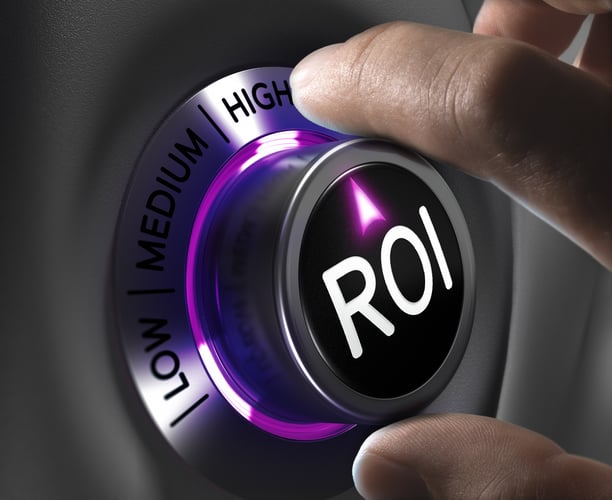Evaluating employees is a workplace standard that has been used for decades. At this point, it’s routine; unfortunately, it's a practice that has become rote. Business is drastically changing, and the old way of doing employee evaluations is outdated! Just look at the prevalence of startups, unconventional office spaces, and even workplace yoga.
Mindfulness is one of the fastest-growing interests in the business sphere. Now it is changing employee evaluations and feedback, too. When that inevitable, and admittedly often awkward, time of year comes around for discussing employees' effectiveness with them, mindfulness is creating a new outlook for workers and managers alike.
Estimated reading time: 6 minutes
 Table of Contents
Table of Contents
Mindfulness in the Workplace Is Trending
What Is the ROI for Mindfulness in the Workplace?
What Is Workplace Mindfulness?
5 Mindfulness Tips for Employee Evaluations
Conclusion
Mindfulness in the Workplace Is Trending
In a huge shift from tradition, General Electric dropped its notoriously cut-throat employee evaluation system in 2015. GE workers used to be ranked on a numeric scale, and the lowest ten percent were fired.
Not only are companies like GE, Microsoft, Accenture, and Adobe dropping their impersonal evaluation scales, but some are changing tactics altogether. Companies including Google, Aetna, Target, and General Mills are focusing on mindfulness to make employees more productive, effective and, well...better at their work.
Mindfulness is changing big business.
As purported by Kenan-Flager Business School in Bringing Mindfulness to the Workplace, “employers are not easily convinced that investing in reflection, openness, and thoughtfulness will impact the bottom line. Encouraging employees to slow down to focus on the present can seem at odds with a corporate culture of speed and goal attainment.”
In other words, what's the return for companies?
 What Is the ROI for Mindfulness in the Workplace?
What Is the ROI for Mindfulness in the Workplace?
There is measurable evidence for mindfulness in the workplace.
One trial (Aikens et al., 2014) found a 20 percent increase in workplace productivity and an estimated employer savings of $22,000 per year after employees received mindfulness training. According to one Forbes article, Aetna saved $2,000 in health care costs and gained $3,000 per employee in productivity after mindfulness training. For owners who insist on ROI figures, numbers like these make mindfulness seem more relevant. And now in 2023, more than half of employers offer mindfulness training according to the Harvard Business Review.
How should the employers themselves use mindfulness, though?
Study after study has proven mindfulness effective for employees (see the Journal of Applied Psychology article “Benefits of Mindfulness at Work”).
But let’s focus on the higher-up positions—the people giving the employee evaluations. First, let's define what we're talking about.
Related reading: "What Science Says About the Workplace Mindfulness Revolution."
What Is Workplace Mindfulness?
“Mindfulness describes a state of consciousness in which individuals attend to ongoing events and experiences in a receptive and nonjudgmental way.” That is the definition from the Journal of Applied Psychology.
But it goes deeper.
As Schaufenbuel wrote in Bringing Mindfulness to the Workplace:
“there are three characteristics of mindfulness; intention, attention, and attitude. Mindfulness practitioners set the intention to be present...they bring their attention to whatever is happening around them...and also cultivate a particular attitude that is nonjudgmental, patient, trusting, nonreactive, and open.”
 This sounds wonderful for personal relationships, but workplaces have their own needs.
This sounds wonderful for personal relationships, but workplaces have their own needs.
“The main business case for (mindfulness) is that if you’re fully present on the job, you will be a more effective leader, you will make better decisions, and you will work better with other people,” said William George, former chief executive of the healthcare giant Medtronic. In a meeting of the UK’s Mindfulness All-Party Parliamentary Group (that is a real thing), representative Jon Kabat Zinn explained that mindfulness is more than just a productivity tool. It is a different quality of relating to the world. Mindfulness, he says, may address “the most pressing problems of society at their very root.”
That is a big promise: “you will be a more effective leader, you will make better decisions, and you will work better with other people.” You will have a tool that can address “the most pressing problems of society.”
At the very least, cultivating an organizational culture that supports mindful work can improve the employee evaluation process. And perhaps employee burnout will be a thing of the past!
Here are five helpful mindfulness tips to introduce to your company and employee evaluations from our research:
5 Mindfulness Tips for Employee Evaluations
1. Practice mindfulness before you start an evaluation.
Having a mindful meeting with an employee starts before the meeting begins. The best way to ensure that a conversation stays focused, meaningful and productive is to make sure all those things are present. As a leader, it can help to do a check-in before a meeting. Monitor your internal landscape. What are you experiencing mentally, physically, and emotionally? Get square with yourself first!
Focusing on your own internal and external state will set you up to be focused, alert and nonreactive in employee evaluations and any work discussion. For more ideas, Mindful recently published these great tips on mindful things to do to start your day, including breathing, physical exercises and easy meditation.
2. Eliminate distractions.
“Research suggests people are thinking about something other than what they are doing for almost half of their waking hours” (Killingsworth Gilbert, 2010).
If you want employee evaluations to be effective, the feedback you give has to be meaningful. That means putting solid attention into the evaluation. The problem is that our attention is often divided into a million pieces by flurries of emails, personal matters, physical sensations, social media and much more. This is where mindfulness comes in.
To be more mindful (aka. more “present” and focused), get rid of extra distractions. Turn off your ringer. Ignore extemporaneous e-mails while working on or delivering evaluations. Leave personal matters for later.
Mindfulness is “extremely helpful in coping with inner and outer distractions in modern workplaces,” says the Oxford Mindfulness Centre. One Journal of Management scholarly article put it this way: “Efficient attention implies reduced attentional costs...mindfulness allows for more stable and controlled attention in routine contexts where individuals are prone to errors due to attention lapses. Mindfulness may reduce errors by reducing such lapses.”

3. Focus on how you want to BE rather than exactly what you want to DO.
A Forbes analysis of mindfulness in the workplace explains, “Mindfulness does not involve any evaluation, interpretation or judgment. In other words, mindfulness is awareness of perception that focuses on ‘being’ rather than ‘doing.’”
Rather than getting so caught in the minutiae of details, take a moment to “zoom out” and look at the big picture. What is the overall feeling you want to convey? What value do you want to convey in this situation? Then, work backward from there. If you want to be supportive—what smaller actions will make you a supportive leader? Decide first if you want to BE inspiring, and then what you want to DO to achieve that.
"The intention comes through,” wrote Jae Ellard for Mindful Magazine, "when you speak from the heart, even if others don’t like or agree with the message...the intention comes through.”
4. Focus on the other person in your conversation
When talking with employees, get curious! Relinquish assumptions and judgments and simply be curious!
Don't feel like you need to control the agenda or what happens; create an open conversation that paves the way for more meaning. Keep your focus on the other person and take your cues from them.
Some researchers call this: other-focus. “This also requires you to make fewer assertions or speeches and ask more questions,” writes Williams. In many interactions, rather than listening to the other person, people are more occupied with what their own response is. Mindfulness, on the other hand, means taking the time to understand the other.
Reflect back what you are hearing by using the speaker’s own words whenever possible. You can paraphrase or summarize the main point. It's best to use open-ended questions to clarify your understanding instead of questions that can be answered with yes or no.
Acknowledge the other person’s point of view. And remember just because you acknowledge a person's perspective does not mean that you are agreeing. Listening intently while validating the person is key to creating more engagement while also warming the conversation with greater meaning.
Deep dive into emotional intelligence to increase mindfulness: "27 Best Ways to Raise Emotional Intelligence in the Workplace."
5. Think about the context
Evaluations are by nature judgmental and specific. In order to make them meaningful and helpful, it’s important to focus on the context of the issues so that neither party views the evaluation as an attack.
”Mindfulness widens attentional breadth,” concluded a multi-university study (previously cited). “This quality makes it valuable for experts.”
Widening your attention means looking at the context of your employee, the situation, and any issues at hand. “Be aware of how external conditions impact the complexity of your interaction. Culture, sex, and geographic location affect how individuals interact with one another. A person’s mood will also affect how they approach and receive communication. On top of that, outside circumstances will allow for a clear, uninterrupted exchange… or not” (Steps to Have a Mindful Conversation).
Evaluations are effective when they get everyone on the same page. So “offer context as to what the issue is, and, ideally, why it’s actually an issue for you,” advises Mindful Magazine. “This allows everyone to get on the same page.” Test Out a Mindful Practice in Your Workplace
Take Mindfulness for a Test Drive in Your Company!
When the next employee evaluation or meeting comes around, take a page from General Electric’s book and test out a mindful practice.
Mindfulness might seem like a buzzword for relationships, but it is perfectly suited to the workplace, especially in employee-employer interactions. “Many core areas of organizational science and practice are inherently relational, including leadership, teamwork, inter-firm partnerships and coordination, trust, psychological safety, communication, conflict, and social networks,” wrote psychologists Dienesch and Liden in an early, 1986 paper on Mindfulness. “Relationships with supervisors and managers are among the most important relationships we have at work.”
Conclusion
Mindfulness is only gaining ground in the workplace. Being more mindful as a leader can only help you be more self-aware and assist in higher-quality interactions. So, why not give it a test drive?
Looking for business solutions?
Learn more about Heartmanity's emotional intelligence training for businesses. If you want to increase employee productivity and engagement by applying emotional intelligence in leadership and everyday business, please email support@heartmanity.com.








